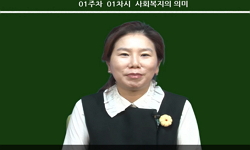Donation is a prosocial behavior of giving one’s income and assets without expecting anything in return, serving as an important measure of a society’s social integration and cultural development. This paper explores how objective social status an...
http://chineseinput.net/에서 pinyin(병음)방식으로 중국어를 변환할 수 있습니다.
변환된 중국어를 복사하여 사용하시면 됩니다.
- 中文 을 입력하시려면 zhongwen을 입력하시고 space를누르시면됩니다.
- 北京 을 입력하시려면 beijing을 입력하시고 space를 누르시면 됩니다.

사회적 지위와 기부행동의 연관성: 소득 수준, 주관적 계층의식에 따른 기부참여, 기부의사 분석을 중심으로 = The Relationship between Social Status and Donation Behavior: Focusing on Analysis of Donation Participation and Donation Intention
한글로보기부가정보
다국어 초록 (Multilingual Abstract)
Donation is a prosocial behavior of giving one’s income and assets without expecting anything in return, serving as an important measure of a society’s social integration and cultural development. This paper explores how objective social status and subjective social status influence donation behavior, categorizing donation behavior into four groups: (1) the indifferent group, which is not interested in donating, (2) the simple intention group, which has the intention to donate but has not taken action, (3) the temporary participation group, which donates but has no future plans to continue, and (4) the active participation group, which actively plans and participates in donations. For the analysis, the 2023 “Social Survey” data from Statistics Korea was used. The results of the multinomial logit analysis showed that the probability of being in the active participation group was highest when income level and subjective class consciousness were at their peak. Additionally, even among low-income households with a monthly income of less than 1 million won (USD 750), the likelihood of expressing interest in or participating in donations increased as subjective class consciousness rose. The study’s findings, which indicate that the higher the socioeconomic status, the greater the likelihood of participating in donation behavior, differ from some western studies like Piff et al. (2010). Furthermore, the analysis found that residing in a metropolitan area increased the probability of donation intention and participation, and that the baby boom generation had higher donation participation and intention compared to the MZ generation. These results remained robust even after introducing various demographic and social control variables.
동일학술지(권/호) 다른 논문
-
도농복합지역 중노년층의 스트레스에 관한 텍스트 마이닝 분석: 농업 종사 여부를 중심으로
- 한국보건사회연구원
- 황상원
- 2024
- KCI등재
-
- 한국보건사회연구원
- 주은선
- 2024
- KCI등재
-
지각된 인권친화적 서비스 환경이 정신장애인의 회복에 미치는 영향: 활동 및 참여의 매개효과 검증
- 한국보건사회연구원
- 박종은
- 2024
- KCI등재
-
- 한국보건사회연구원
- 유수정
- 2024
- KCI등재




 KCI
KCI


